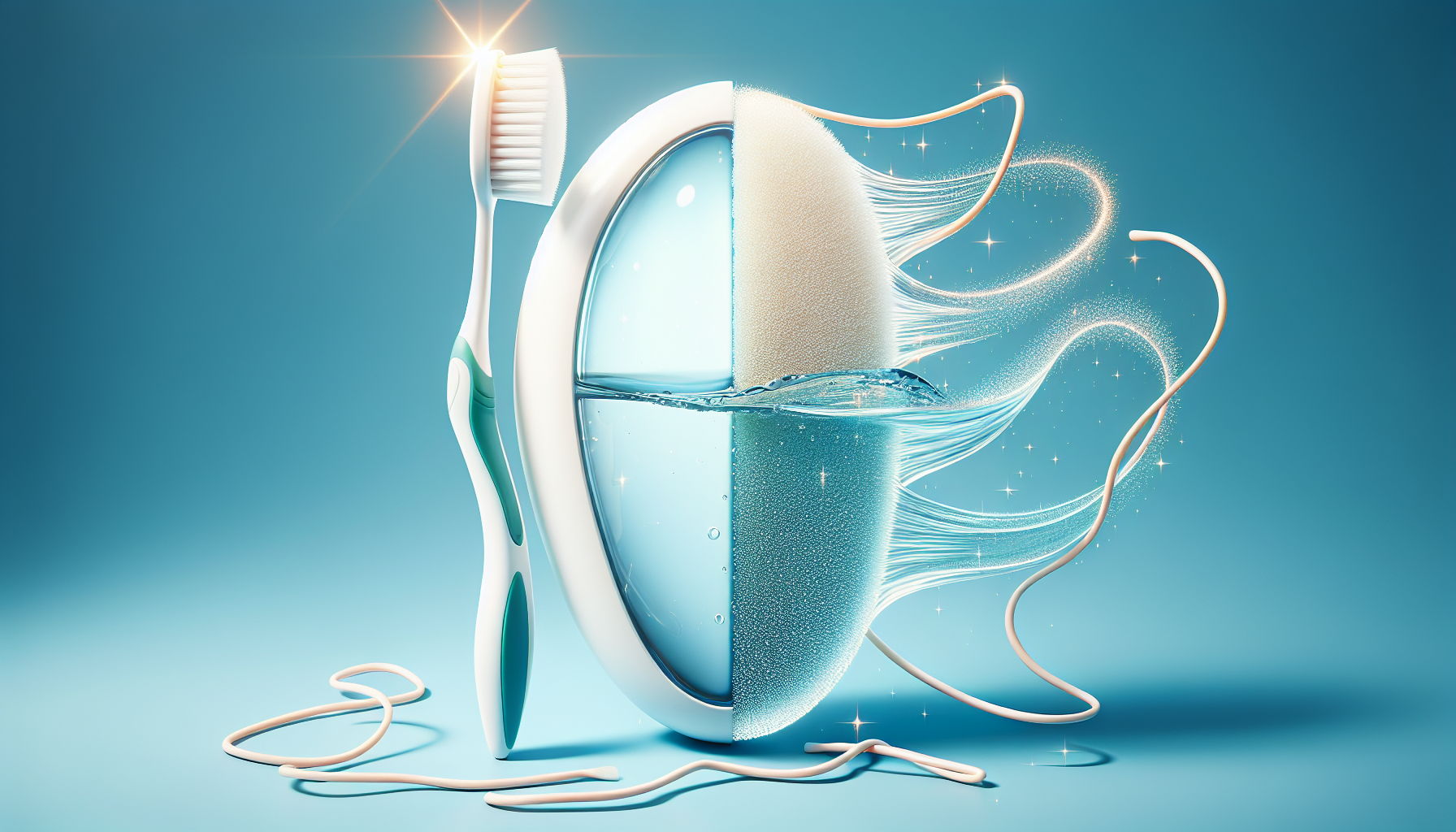Water Flossers vs. Traditional Floss: Which Is Better?
Short answer: both can work well. The “best” option is the one you’ll use every day. Floss is great at scraping plaque between tight teeth; water flossers shine for ease, comfort, and cleaning around braces, implants, and bridges.
How They Work
- Traditional floss: A thin strand scrapes sticky plaque off the sides of teeth under the gumline.
- Water flosser (oral irrigator): A pulsed stream of water flushes food, disrupts bacteria, and reduces gum bleeding.
Pros and Cons
Traditional Floss
- Pros: Inexpensive, precise on tight contacts, no power or counter space needed.
- Cons: Technique-sensitive; many people don’t do it daily; tricky around braces, bridges, or crowded teeth; can irritate gums if snapped.
Water Flosser
- Pros: Easy and fast; comfortable; excellent around braces, implants, crowns/bridges, and deeper gum pockets; often reduces gum bleeding/inflammation; helpful for limited dexterity.
- Cons: Costs more; needs water, charging/outlet, and counter space; a bit messy; doesn’t scrape sticky plaque on tight contacts as effectively as floss or interdental brushes.
What the Research Suggests
- Both methods improve gum health when used daily with proper brushing.
- Water flossers frequently show greater reductions in gum bleeding and inflammation versus string floss in clinical studies.
- Plaque removal on tight contacts is typically better with correct flossing (or interdental brushes where space allows).
- Technique and consistency matter more than the tool.
Who Should Choose What?
- Choose a water flosser if: You have braces, implants, bridges, gum disease, sensitive gums, or difficulty using floss—or you simply won’t floss.
- Choose traditional floss if: Your teeth are tight with minimal dental work, you’re comfortable with the technique, and you want the lowest-cost option.
- Best of both worlds: Many people use a water flosser nightly and floss a few times per week, or add interdental brushes for larger gaps.
How to Use Them Right
Floss (about 18 inches)
- Wrap ends around middle fingers; pinch a 1–2 inch section.
- Gently slide between teeth, curve into a C-shape, and scrape up and down each side under the gumline.
- Use a fresh section for each tooth.
Water Flosser (about 1 minute)
- Fill with lukewarm water; start on low pressure.
- Lean over sink; close lips slightly to limit splashing.
- Aim at the gumline at 90 degrees; pause briefly between teeth, inside and outside.
Safety and Tips
- Don’t blast directly into the gum tissue; trace along the gumline.
- Clean the device and replace tips as recommended to prevent buildup.
- If you have complex dental work or a history of gum disease, ask your dentist or hygienist for personalized guidance.
Bottom Line
The best interdental cleaner is the one you’ll actually use daily. If flossing is a struggle, a water flosser is an excellent, evidence-backed alternative—especially around orthodontics and implants. Pair your choice with twice-daily fluoride brushing and regular checkups for the healthiest results.
Post Disclaimer
DentalUp is for educational purposes only and cannot accept personal dental information such as x-rays, photos, or treatment details. See full disclaimer here.





